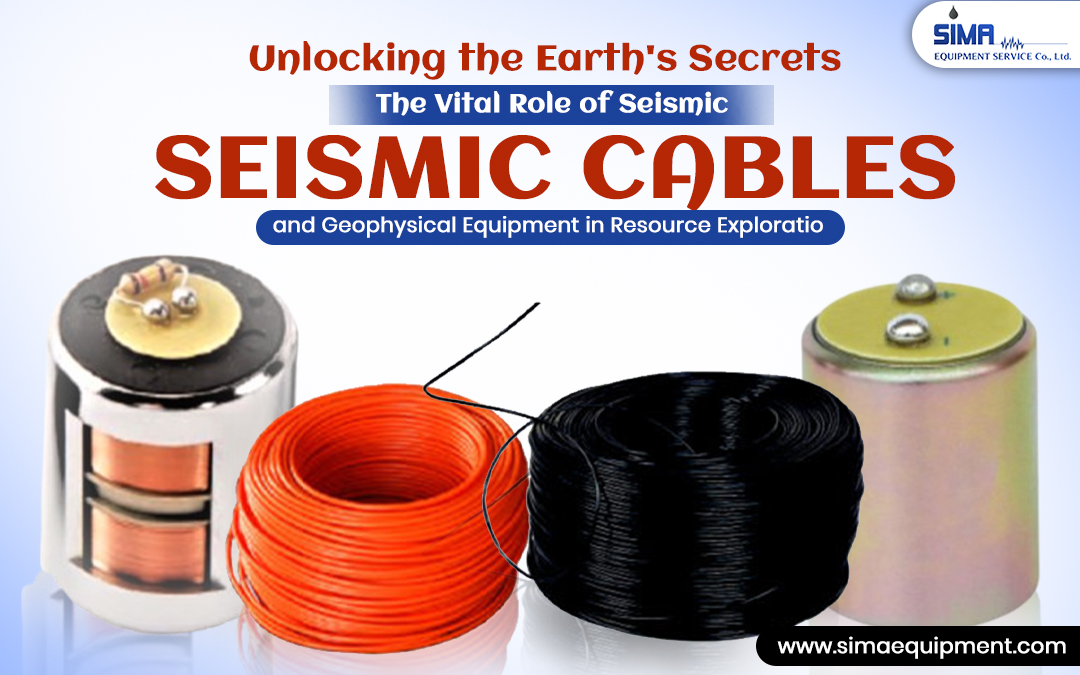seismic cable
Unlocking the Earth’s Secrets: The Vital Role of Seismic Cables and Geophysical Equipment in Resource Exploration
Understanding the earth’s crust and features requires seismic cable and other geophysical equipment. Geoscientists, builders, and researchers need these technologies to investigate rock formations, discover resources, and assess natural disaster risk. Gathering and analysing reliable subsurface data becomes increasingly vital as natural resource demand rises. This article discusses seismic cable and other geophysical equipments, their purposes, and technological advances.
Understanding Seismic Cables
Use seismic cables to transport seismic wave data from geological studies. Many geophones measure seismic wave vibrations on these lines. A minor explosion or hammer impact sends seismic waves through rock layers. Seismic cables pick up these waves and convert them into electrical signals that reveal what’s below.
A seismic cable collects high-quality data to determine rock structure below the surface. This depends on the survey’s needs and the area’s geology. Reflection seismic surveys use wires in grids or straight lines to map the rock layers underneath.
Using Geophysical Tools
Geophysical equipment contains many tools for studying Earth’s physical properties. Gravimeters can detect dense things like oil or rocks by measuring gravitational field strength. Magnetic anomalies in the earth reveal rock structure and makeup using magnetometers.
GPR and other geophysical technologies are applicable. GPR uses high-frequency radio waves to reveal underground structures and details. It is good at finding buried items, rock layers, and groundwater. These techniques collectively provide a complete natural landscape view, aiding resource management and risk assessment.
Uses in resource search
Geophysical instruments and seismic cables are useful for finding natural resources. These tools help oil and gas companies discover good drilling sites and streamline mining. Seismic investigations help geoscientists map subterranean structures, reducing drilling risks. Correctly charting geological formations helps companies decide where to drill. Resource extraction improves, and operations costs decrease.
Mining companies employ geophysical technology to discover and appraise mineral deposits. Resistivity and electromagnetic scanning detect mineral deposits, ensuring effective and environmentally friendly extraction processes. Predicting an area’s mineral potential makes exploration more profitable and less ecologically damaging.
Innovations in technology
Recent technological advances have significantly improved the capabilities of seismic cables and geophysical equipments. Digital sensors on data-gathering devices improve data quality and processing speed. Modern seismic lines deliver data in real time, allowing geoscientists to analyse results immediately and adjust survey plans. The capacity to work in real time is vital in fast-changing environments.
Wireless seismic cables simplify and speed distribution, saving money and time. Surveys run faster and more efficiently with wireless technologies. Machine learning methods for data interpretation are also emerging. These technologies let geoscientists analyse big datasets more efficiently and accurately.
Environmental thoughts
As resource development becomes more necessary, the environmental impact of using geophysical equipment must be considered. Environment-friendly research strategies reduce ecosystem harm and carbon footprints today. Use environmentally friendly seismic sources and non-invasive methods like GPR and electrical resistivity. The sector uses cutting-edge technologies and environmental regulations to balance resource extraction with environmental protection.
More corporations are using environmental assessments in their exploration. Responsible resource management requires understanding how exploration operations affect local ecosystems.
Conclusion
Seismic cable and geophysical equipment play a significant role in modern geological investigation. Their accurate Earth’s crust data has transformed mining, oil and gas, and environmental assessment. These tools improve with technology, enabling responsible resource management and environmentally favourable activities. Understanding and using these technologies will help humanity properly investigate and use Earth’s resources. Future geophysical research will depend on innovative technologies, environmental care, and long-term approaches. At Sima Equipment, we offer state-of-the-art seismic cables and geophysical tools to help your research projects be more accurate, efficient, and long-lasting.

